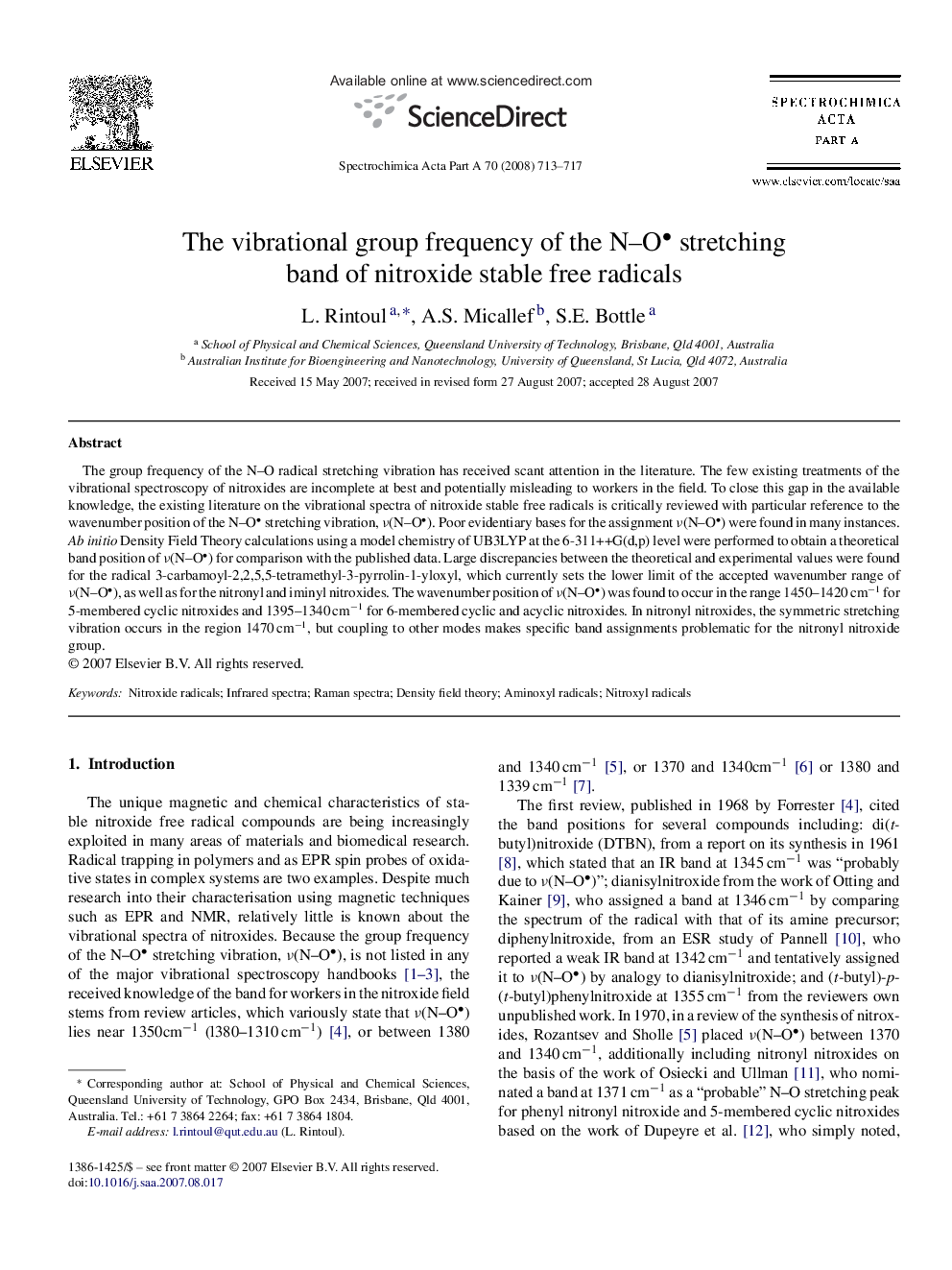| Article ID | Journal | Published Year | Pages | File Type |
|---|---|---|---|---|
| 1234133 | Spectrochimica Acta Part A: Molecular and Biomolecular Spectroscopy | 2008 | 5 Pages |
The group frequency of the N–O radical stretching vibration has received scant attention in the literature. The few existing treatments of the vibrational spectroscopy of nitroxides are incomplete at best and potentially misleading to workers in the field. To close this gap in the available knowledge, the existing literature on the vibrational spectra of nitroxide stable free radicals is critically reviewed with particular reference to the wavenumber position of the N–O stretching vibration, ν(N–O). Poor evidentiary bases for the assignment ν(N–O) were found in many instances. Ab initio Density Field Theory calculations using a model chemistry of UB3LYP at the 6-311++G(d,p) level were performed to obtain a theoretical band position of ν(N–O) for comparison with the published data. Large discrepancies between the theoretical and experimental values were found for the radical 3-carbamoyl-2,2,5,5-tetramethyl-3-pyrrolin-1-yloxyl, which currently sets the lower limit of the accepted wavenumber range of ν(N–O), as well as for the nitronyl and iminyl nitroxides. The wavenumber position of ν(N–O) was found to occur in the range 1450–1420 cm−1 for 5-membered cyclic nitroxides and 1395–1340 cm−1 for 6-membered cyclic and acyclic nitroxides. In nitronyl nitroxides, the symmetric stretching vibration occurs in the region 1470 cm−1, but coupling to other modes makes specific band assignments problematic for the nitronyl nitroxide group.
